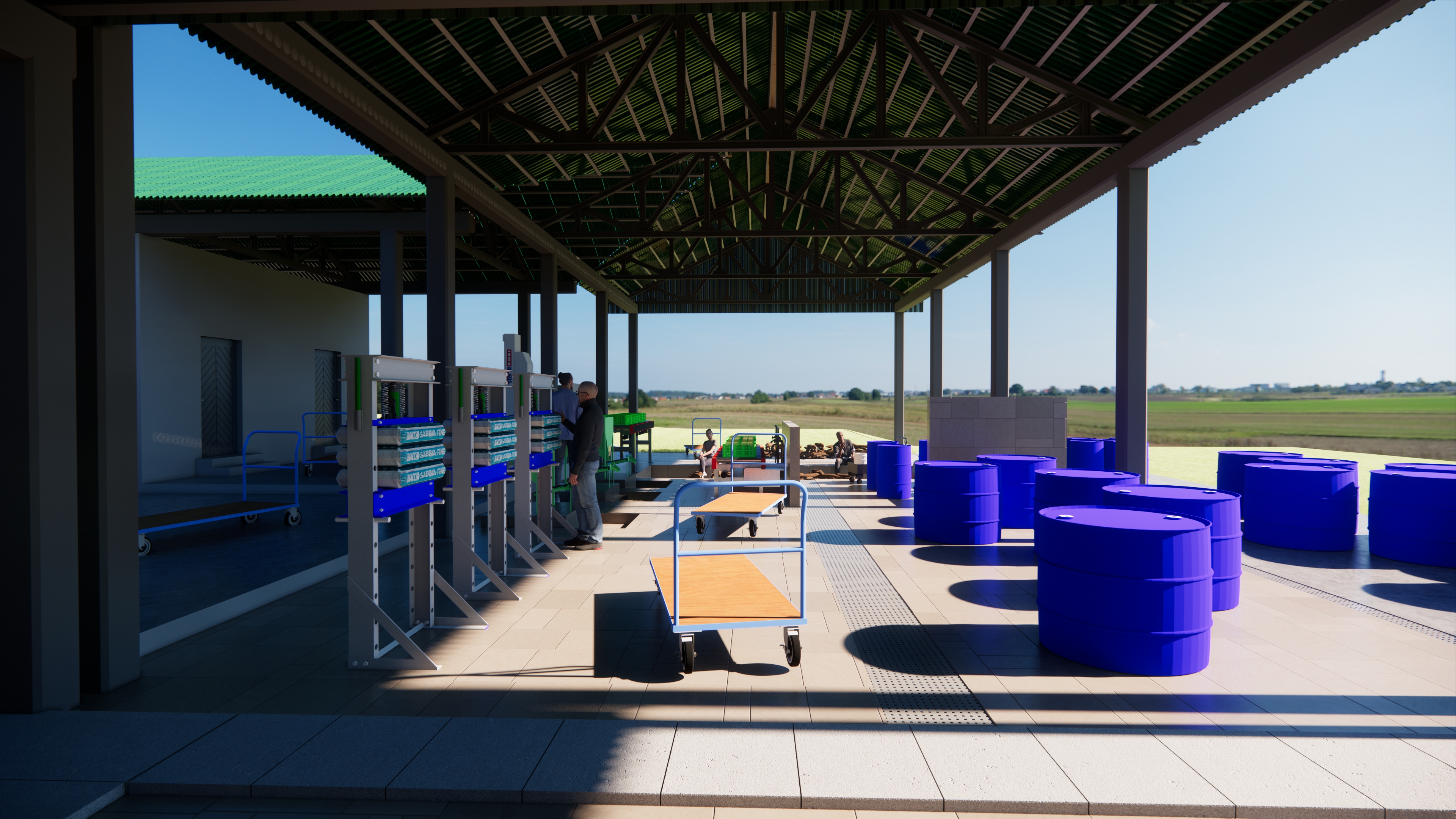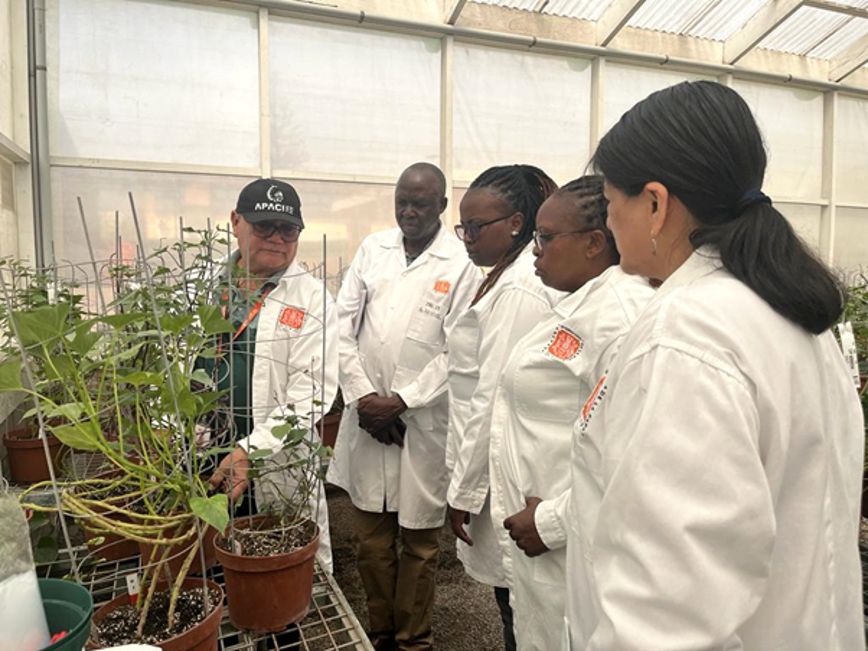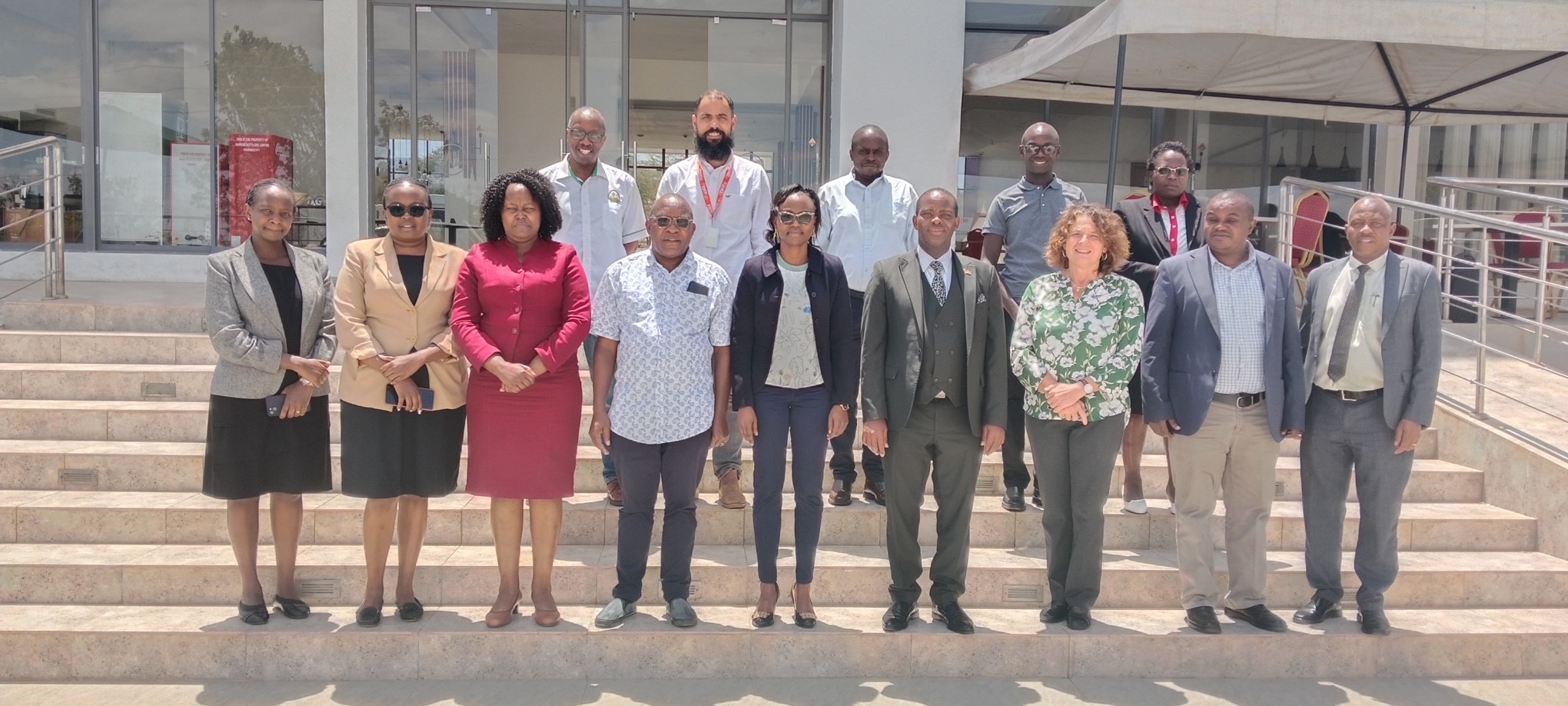Roots, tubers, and bananas (RTB) are vital food sources for over 3 billion people in Africa, offering high calorie yields per hectare and essential nutrients. More resilient to drought than other crops, RTB are crucial for poverty alleviation. Often cultivated by women, they have diverse applications, spanning from food processing and industrial use to animal feed.
But the vegetative propagation of RTB seeds – where plants clone themselves – presents challenges, such as low multiplication rates, prolonged breeding cycles, limitations on germplasm exchange, and difficulties in crossing, all impeding the development of new varieties. Additionally, due to their perishability and bulkiness of the roots and tubers, phenotyping for processor and consumer-preferred traits is a major bottleneck in breeding for quality traits.
Crops to End Hunger program, via four projects, provides a bundle of solution for RTB breeding. Bringing together CGIAR Centers and NARES partners, the projects modernize breeding programs and networks to deliver high rates of genetic gains to RTB farmers and consumers in Africa.
Upgrading breeding facilities for germplasm exchange
Population relying on RTB crops in Africa is expected to double by 2050, so expediting better varieties is urgent. After careful assessment of breeding facilities and meticulous planification, CtEH projects are now quickly delivering by leveraging the presence and capacity of CGIAR Centers.
In Kenya for example, a collaborative effort spanning two decades involves governmental agencies, plant protection organizations, the International Institute for Tropical Agriculture (IITA), the International Potato Center (CIP) and Kenya Plant Health Inspectorate Service (KEPHIS), to foster RTB breeding and germplasm exchange.
Recognizing the limitations of KEPHIS facility built in the 1970s, partners are establishing a center of excellence and training, also strengthening CGIAR-NARES breeding networks.
“The refurbished facility addresses gender needs, aligns with various crops’ workflows, ensures cleanliness and sterility, and it will be powered by sustainable energy sources. The services offered will include international accredited diagnostics, pathogen elimination, in vitro facilities, tracking systems, and genotyping for quality control”, explained Morag Ferguson, IITA.
As the potential for carrying over pathogens from one season to the next in RTB crops, and the time required to eliminate them, is very high, the renovated facility will eventually foster germplasm exchange. Capacity building efforts are also underway to empower teams to receive and manage germplasms. With KEPHIS already distributing and possessing certificates and import permits, regional distribution will be enhanced.
Investing in key equipment for phenotyping upgrade
CtEH funding also encompasses investments in essential equipment. To tackle disease control, storage rooms are being installed at various locations, ensuring precise regulation of temperature and humidity. Net houses are being established to create pest and disease-free environments, improving seed security and facilitating phenotyping.
Tools are also purchased to analyze RTB quality and nutritional traits. Ismail Rabbi, IITA, explicates: “In Nigeria, there are four major cassava product profiles. To assess their quality traits, we must process the roots, which can be complex. So, we are improving the workflows and purchasing equipment for mechanical peeling, grating, de-watering, sieving, toasting and better storage material. Data quality of root processing will considerably increase which will allow us to deliver market segment-suitable varieties much faster.”

Computer-generated image illustrating the new facilities being built in Nigeria to accommodate plant breeding activities. Credit: IITA
Improving breeding technologies
In Africa, cassava producers favour upright plants which take longer to reproduce. With the support of CtEH, the Alliance of Biodiversity and CIAT (The Alliance), and IITA are teaming up to develop technologies that speed up breeding for erect cassava, including flower-inducing.
Xiaofei Zhang, the Alliance, explains: “With CtEH support, we identified four factors strengthening our flower-inducing technique: medium-altitude nurseries, extended photoperiods, strategic pruning, and fertility-enhancing hormones. Cassava seeds now flower three months earlier, with an increase in female flowers and fruits production.”
The Alliance and IITA plan to make this technology widely accessible by setting up red light systems at both Centers and conducting dissemination workshops.
Other technologies such as genomic selection and genome-wide association mapping are also now accessible at both Center via big data-driven servers empowering breeding teams for these routine analyses.
Streamlining processes
Potato breeding requires lots of manual and time-consuming labor. The production and disease testing of botanical seed through crossbreeding take up to eight months. After this, the clonal tuber seed propagation follows, adding complexity to the selection process. So, CtEH focuses on enhancing the efficiency of potato breeding, in combination with other improvements aims at shortening cycles by four years.
Hannele Lindqvist-Kreuze, International Potato Center (CIP), explains: “We aim to streamline workflows by expanding lab facilities and reducing seed processing time by 20%. A target of 40% increase in capacity for tuber seed multiplication will be achieved through mechanization and a more efficient soil sterilization systems. The seed storage facilities will increase by 25%, and automatic irrigation and improved sterilization methods will considerably reduce labor intensity.”

Training of KEPHIS and CIP staff on virus diagnostics and phytosanitation in Lima, Peru, November 2023. Credit: CIP
Selection accuracy for genotyping should also increase with newly acquired digital tools, while fostering collaboration with NARES in Bangladesh and breeding networks in Eastern and South Africa. CIP and NARES data collection systems will be enhanced and accompanied by trainings.
Engaging NARES and national partners at every stage
The newly established facilities will be centers of excellence and training, providing support and capacity building to partners. NARES are involved at earlier stages, allowing them to test new varieties before official release, facilitating early selection and adoption by farmers.
At KEPHIS, collaboration with the Ministry of Agriculture and Livestock Development and the Ministry of Public Works underscore the project’s relevance. The laboratory will be jointly managed by KEPHIS and CGIAR, ensuring continuous involvement of national partners.

IITA, CIP and KEPHIS representatives meeting with the Kenyan Ministry of Agriculture and Livestock Development. Credit: IITA
CGIAR is currently a service provider but will eventually transition to a service user. This evolution reflects the collaborative and sustainable nature of the projects, fostering a dynamic partnership between CGIAR, NARES, and other partners.
CtEH projects for RTB apply the same logic of intervention across various crops and locations, which includes upgrading facilities, investing in equipment, improving breeding technologies, and streamlining processes, in collaboration with multiple partners. These projects leverage existing networks and the expertise of CGIAR Centers to deliver RTB crops that can contribute to nourish a whole continent.
Resources
- CtEH Project Update: Roots, Tuber and Banana Breeding – Phenotyping, and Germplasm Exchange Hub Upgrade
- Webinar recording: Roots, Tuber and Banana Breeding – Phenotyping, and Germplasm Exchange Hub Upgrade
- Crops to End Hunger (CtEH) Program
NB: CtEH’s support for Root, Tuber, and Bananas is realized through four projects: Upgrading Infrastructure and Facilities for Accelerated Breeding and Genetic Gain in Cassava; Regional Germplasm Hub for Vegetatively Propagated Crops @ KEPHIS Muguga; Investing in (sweet)potato breeding networks to mitigate climate change; and Upgrading CIP-NARS East Africa potato breeding hub infrastructure.
———–
Written by Julie Puech, Accelerated Breeding and Breeding Resources Initiatives. “Crops to End Hunger (CtEH)” is a multi-funder initiative that aims to accelerate and modernize the development, delivery and wide-scale use of new crop varieties that are better adapted to climate change and that address gender equity, nutrition, food security and poverty. We extend our heartfelt appreciation to all the generous supporters of this initiative, with special recognition to GIZ. We also express our gratitude to the CGIAR research funders for their invaluable contributions to the CGIAR Trust Fund. Main image photo credit: Jjumba Martin, EiB/CGIAR.